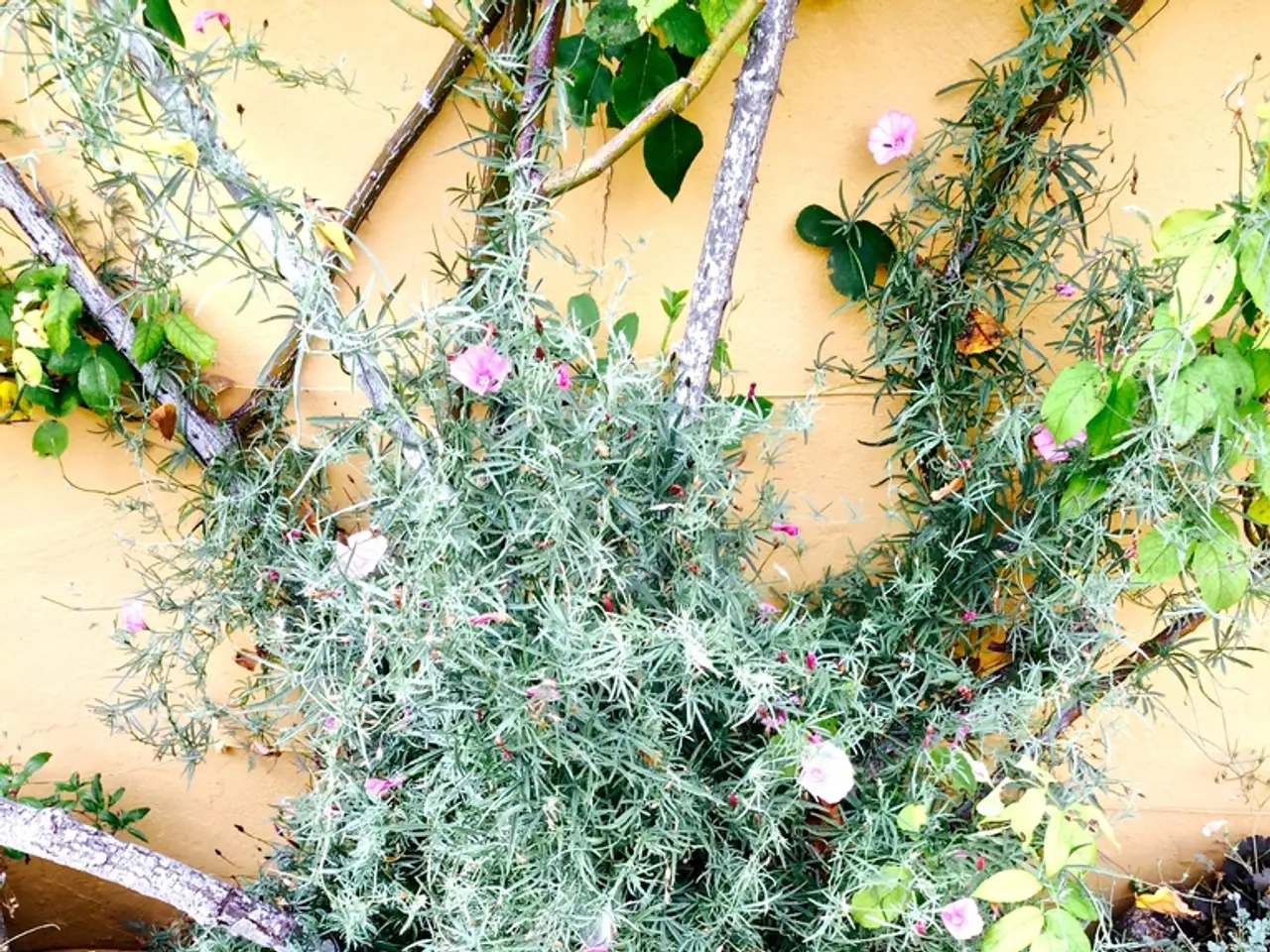Bloom in November: Examining the Blossoming Plants and their Attractiveness for Your Yard This Month
Gardening in November: A Palette of Colour, Structure, and Wildlife Support
As the leaves begin to change and the days grow shorter, the garden can still be a vibrant and thriving space. Here are some plants to consider for November, offering colour, structure, and support for wildlife:
Colourful Companions
- Coronilla valentina subsp. glauca 'Citrina' - Soft-yellow flowers that scramble and ramble over the ground, providing a charming haphazard charm.
- Plectranthus argentatus - Blue spikes against silver-grey leaves make this a striking addition to a hot border.
- Deyeuxia effusiflora - Loose and airy plumes with a soft, purple glow, adding elegance to any garden.
- Acer griseum - A tree with translucent, papery bark in late autumn and winter, offering a unique visual interest.
- Fuchsia 'Blacky' - Large, dark purple flowers and almost-black fruits, creating a striking contrast in the garden.
- Allium thunbergii 'Ozawa' - Produces clusters of bright-purple to purple-pink flowers from September to November.
- Nicandra physalodes 'Black Pod' - Bell-shaped flowers in pale blue to violet, with spectacular, black-spotted seedpods.
- Saxifraga 'Shiranami' - Abundant, pure-white, double flowers frothing above slightly hairy, apple-green leaves.
Structure and Wildlife Support
- Echinacea (coneflowers) and Sedum - Perennials that provide good winter structure and attract wildlife such as pollinators and birds.
- Ornamental grasses - Add height, texture, and winter interest while offering shelter for wildlife.
- Mountain Laurel - An evergreen shrub with year-round structure and flowers in spring, ideal for woodland or naturalized gardens.
- Butterfly Bush (compact, non-invasive varieties) - Provide long-lasting flowers from summer through fall, attracting butterflies and bees.
- Weigela - Arching branches with ornamental flowers that appeal to hummingbirds and extend visual interest beyond bloom season.
- Astilbe 'Beauty of Ernst' - A wide colour spectrum of leaves ranging from green and purple to gold, orange and deep red in autumn.
- Prunus incisa 'Kojo-no-mai' - A compact cherry tree with flame-like autumn foliage.
- Nepeta kubanica - Large, purple-blue flowers rising above large, fresh-green leaves, with purple spiked seedpods creating a strong architectural effect in late autumn.
Hardy Herbs and Cool-Season Planting
- Rosemary, Sage, Thyme - Hardier herbs that establish well in mild winter climates if planted in fall.
- Roman Chamomile - A perennial herb that tolerates some frost and can be used as ground cover, adding soft texture and scent.
- Spinach, Kale, Lettuce, Mustard greens, Swiss chard - These leafy greens tolerate cool weather and can be planted in late fall for harvest into winter, especially in milder zones.
- Root crops like carrots, beets, radishes, turnips - Can be sown to develop in cooler soil, adding edible interest and winter garden productivity.
- Garlic and shallots - Best planted in late October to early November for harvest the following spring.
By incorporating these plants into your garden, you can ensure that it continues to thrive and provide colour, structure, and support for wildlife throughout the fall and winter months. Happy gardening!
References
- RHS
- Gardeners' World
- Garden Myths
- Wildlife Trusts
- RHS Plants for Pollinators
- To maintain the vibrant atmosphere in your home-and-garden lifestyle during November, consider planting hardy herbs such as rosemary, sage, and thyme, providing a reassuring scent and edible interest.
- For a striking visual display, incorporate plants like Saxifraga 'Shiranami' in your garden, offering abundant, pure-white double flowers that create a charming contrast against the autumn landscape.
- To support wildlife and add structure to your gardens during the colder months, opt for ornamental grasses, offering shelter and height, while also providing interest in winter, such as Plectranthus argentatus with its silvery grey leaves and blue spikes.




